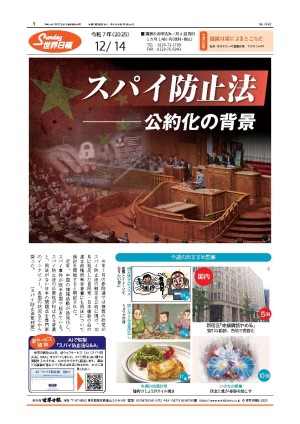このままだと不幸が増えるドライバー行政 Unhappy motoring ahead
長年、国のハイウエーや脇道での交通事故死は、ゆっくりとはいえ確実に減少していたのだが、これからの数年間、死亡者や負傷者の数が上昇し続けるならば、それは政府の監視態勢の失敗のせいである可能性がある。
全米安全評議会(NSC:米国の交通安全、火災予防などに関する広報機関)の2016年の速報値は、昨年、4万人もが自動車事故で死亡したことを明らかにしている。それは、対2015年比6%アップであり、対2014年比は14%アップとなる。舗装道路も、そこを走る車も極めて少なかった1921年以来、NSCはこういった統計値を収集してきたのであるが、それは「1964年以来、最も劇的な上昇である」と言っている。
さらに悪いことには、2016年に、450万人の運転者、乗客、歩行者が医療を必要とする程度の重傷を負っているのである。悲しみや喪失感はさておき、それは社会に4320億㌦を超える損失を与えている。
死亡および負傷者数が上昇していることは、好転しつつある経済と、比較的安価なガソリン価格に、その原因が求められる。なぜなら、この二つとも、仕事のためであれ、レジャーのためであれ、より多くの運転者を駆り立てて、その両方の目的のために、より長距離運転するよう仕向けるからである。
ハイウエーでの大量殺人に拍車を掛ける要素はもう一つある。つまり、オバマ政権によって課せられる上昇する高い企業平均燃費(CAFE)基準である。これらの基準は、2012年にオバマ政権の運輸省と観光保護庁によって義務付けられ、自動車製造業者に2025モデル年度までに、自動車および軽量トラックのガロン当たりの54.5マイルという燃費節約を達成するよう求めている。それは、それ以前のCAFE基準、ガロン当たり35.5マイルへの基準引き上げに続いて、昨年行われたものだった。
2014年から2016年までの2年間のハイウエーでの死亡件数の14%増加は、単なる偶然ではない。新しい政権によって、それらが廃止されるか、改定されて、引き下げられなければ、今後の8年で、2025年基準は段階的に達成されていくので、死傷者数は上昇し続けるのである。
「燃費をより良くし、温室効果ガス放出を減らすという政権の国家計画は、ガソリンスタンドで1兆7000億㌦以上を消費者に節約させ、米国の石油消費を120億バレル減少させるであろう」とオバマのホワイトハウスは、1ガロン当たり54.5マイルの公表の中で誇らしげに語った。
自動車製造業者がそのゴール達成のために唯一できることは、自動車の内部により軽い材料を使い、そして軽トラックを製造することであろう。ということは、より多くのプラスチック、複合材料を使い、より少ない鋼鉄を使うことになる、ということなのだ。これは、オバマ氏の温室効果ガス放出を減らす過激な環境アジェンダの追求の中で行われるのだ。
二股掛けようとして、オバマ氏は、大統領在任中の末期、ガロン当たりのガソリン価格の値下がりを手柄とした。あたかも、彼の政策がガソリン価格の下降に大いに関係したとでも言うように。
オバマ氏の最初のエネルギー長官、物理学者のスティーブン・チュー氏は、2008年のウォール・ストリート・ジャーナルに、ガソリン価格を上げることがエネルギー経済学を促進するやり方であると語り「どうにかして」「私たちはガソリン価格を欧州並みに引き上げる方法を案出しなければならない」と語ったが、それは、ガロン当たり9㌦から10㌦にという話である。
チュー氏は、その4年後に、彼の素晴らしいアイデアを撤回した。フィアットに乗るイタリア人や、ルノーに乗るフランス人にとって良いことが、必ずしもビュイックに乗るアメリカ人に受け入れられるとは限らないのだ。
オバマ政権の非現実的なCAFE基準を押し戻すことは、政府の「やることリスト」には載っていない。多分、NSCが、以前、オバマ氏の国家運輸安全委員会(NTSB)の委員長だったデボラ・A・P・ハースマン氏によって指揮されているからである。恐らく新しい政権はこの件をその約束の修正リストに含めるであろう。
(2月21日付)
After years of slow but steady decline, traffic fatalities on the nation’s highways and byways are increasing again. If the death and injury toll continues to rise in the years ahead, it’s likely the fault of government supervision gone awry.
The National Safety Council’s preliminary figures for 2016, released last week, reveal that as many as 40,000 people died in car crashes last year. That’s up 6 percent over 2015, and a remarkable 14 percent rise over 2014. The safety council, which has been collecting these statistics since 1921 when there were few paved roads and few cars on them, says it’s “the most dramatic two-year escalation since 1964.”
Making matters even worse, 4.6 million drivers, passengers and pedestrians were injured seriously enough to require medical attention in 2016. Grief and loss aside, that costs society upward of $432 billion a year.
The rising death and injury toll is attributed to the improving economy and relatively low gasoline prices, which encourage more drivers to drive more miles for both work and pleasure.
But there’s another factor that accelerates highway carnage, the rising high corporate average fuel economy, or CAFE, standards imposed by the Obama administration. These standards were mandated in 2012 by the Obama administration’s Department of Transportation and the Environmental Protection Agency, and demand that automobile manufacturers achieve a fleetwide fuel economy equivalent to 54.5 miles per gallon for cars and light-duty trucks by the 2025 model year. This followed an earlier CAFE standards increase to 35.5 miles per gallon last year.
That two-year increase in highway fatalities from 2014 to 2016 of 14 percent is not just a coincidence.The number of deaths and injuries will continue to rise as the 2025 standards are phased in over the next eight years unless they are rescinded, revised or reduced by the new administration.
“The administration’s national program to improve fuel economy and reduce greenhouse-gas emissions will save consumers more than $1.7 trillion at the gasoline pump and reduce U.S. oil consumption by 12 billion barrels,” the Obama White House boasted in the announcement of the 54.5 miles per gallon mandate.
The only way automobile manufacturers can make that goal will be to use lighter-weight materials in the cars and light trucks. That means more plastic and composites, and less steel. This is done in the pursuit of Mr. Obama’s radical environmental agenda of reducing greenhouse-gas emissions.
Trying to have it both ways, Mr. Obama late in his presidency took credit for the falling price of a gallon of gasoline, as if his policies had very much to do with falling prices at the pump.
Mr. Obama’s first energy secretary, Steven Chu, a physicist, told The Wall Street Journal in 2008 that raising the price of gasoline was the way to encourage energy economics. “Somehow,” he said, “we have to figure out how to boost the price of gasoline to the levels in Europe,” he said. That would be $9 to $10 a gallon.
Mr. Chu recanted his bright idea four years later. What’s good for an Italian motorist in a Fiat or a Frenchman in a Renault is not necessarily acceptable for an American motorist in a Buick.
Rolling back the Obama administration’s unrealistic CAFE standards is not on the government’s to-do list, perhaps because the National Safety Council is directed by Deborah A.P. Hersman, who previously served as Mr. Obama’s chairman of the National Transportation Safety Board. Maybe the new administration will include this in its promised fix-it list.
February, 21,2017





